We all have our heirloom family dishes, dressers and Afghans, but so few of us have heirloom family tomato seeds. I suppose that if this were Italy, we would have all four. But since the concept of heirloom varieties of vegetables is a bit ‘Greek’ to all of us, I’ll do my best to give you the Heirloom Tomato Course 101. Heirloom tomatoes are deserving of an introduction and if I’m to convince you to appreciate their unique look and supreme flavor it is helpful to know a bit about them.
Heirloom plants are usually open-pollinated plants. Heirlooms are cultivars that were commonly grown during earlier periods in human history. By open pollinated, I mean plants that were allowed to be freely pollinated by bees, birds or wind and their seeds were saved from the female parent plant that may have had slightly different characteristics from the plant we are eating from now because the male parent plant is usually unknown. Conversely, a hybrid plant comes from controlled pollination where the female and male parent plans are known and are deliberately bred so that the seeds they produce contain desirable characteristics from each parent plant, such as the right shape from one plant and the right color from the other, for example.
Are you bored yet?
Open pollinated or heirloom cultivars preserve genetic diversity (this is what is cool about them). Since they are open pollinated, from year to year they are naturally bred to ‘evolve’ so to say, with the times, the farm’s soil conditions(and climate as seeds are sometimes transported across the country), and other fancy things like the ability to resist blights. Who knows what kinds of things these mysterious plants are adapting to from year to year. Heirloom plants are usually continuously bred by seed savers because of their hardy nature and the superior flavor, color, shape and textures that the fruits themselves possess.
Oh, and one other thing about heirlooms, they usually look really funky. I’m a funky sort of a gal, so I dig funky vegetables. They are usually in-consistent in their shapes and their colors sometimes vary-you can see how this would annoy your average grocery store produce buyer who wants all the tomatoes on their shelves to look the exact same. Heirloom vegetables have a superior flavor as they are bred primarily for flavor and their genetic adaptability. Enjoy your Heirloom Cherokee Purple, Yellow Brandywine, Pink Brandywine, San Marzano, and Nepal tomatoes.
 Fully Ripe Cherokee Purple
Fully Ripe Cherokee Purple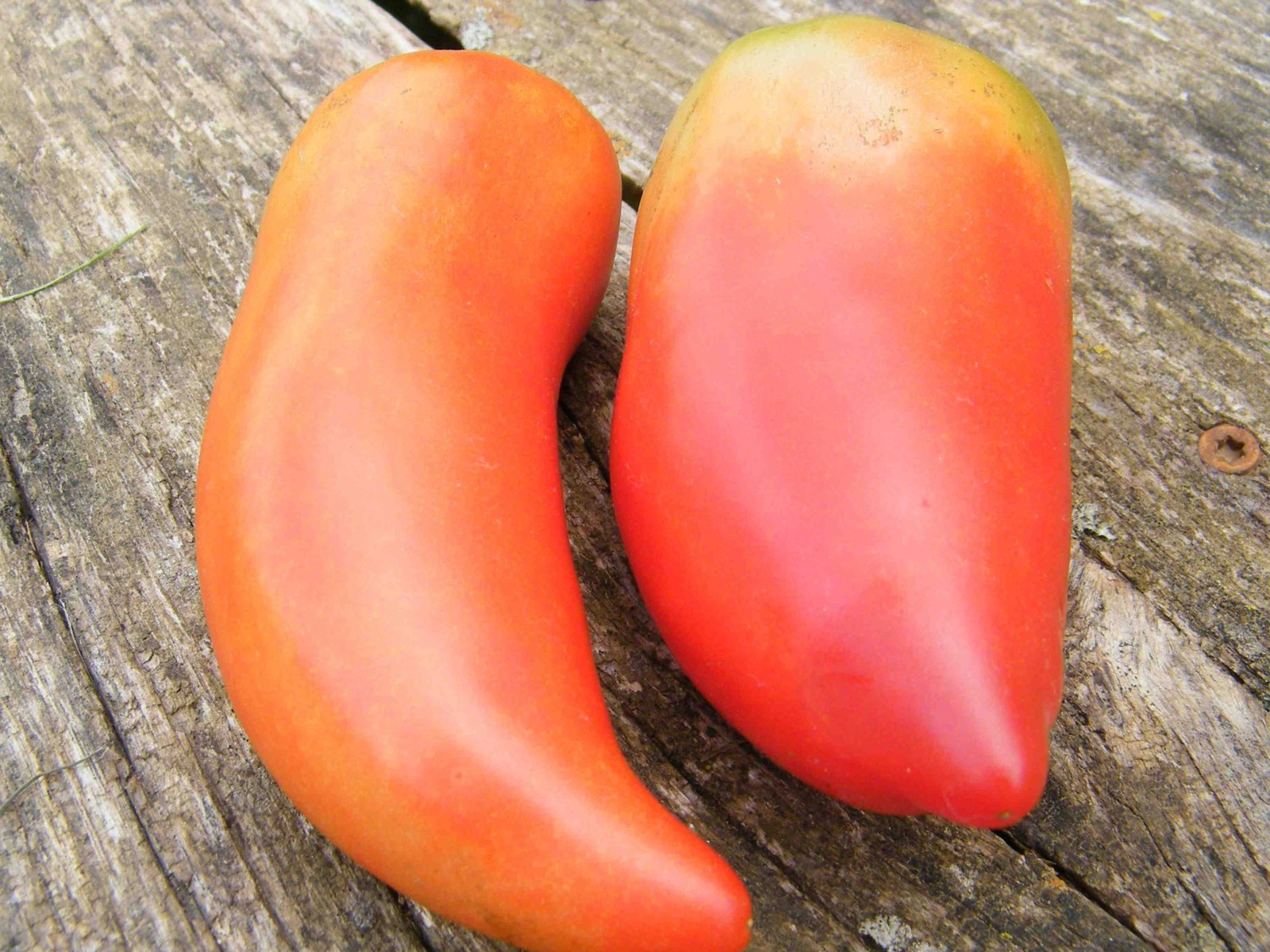 San Marzano Heirloom Paste
San Marzano Heirloom Paste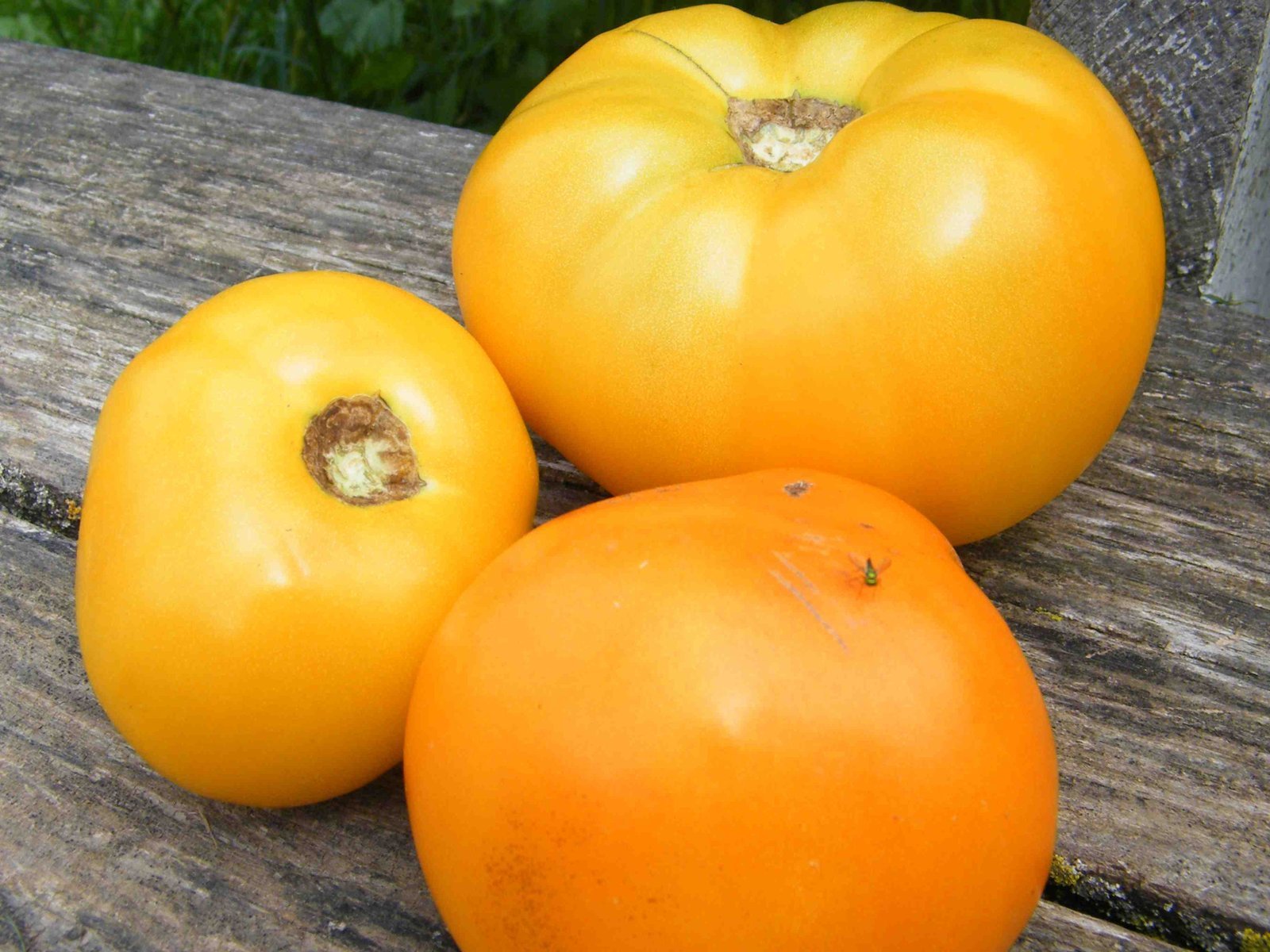 Orange Blossom Heirloom
Orange Blossom Heirloom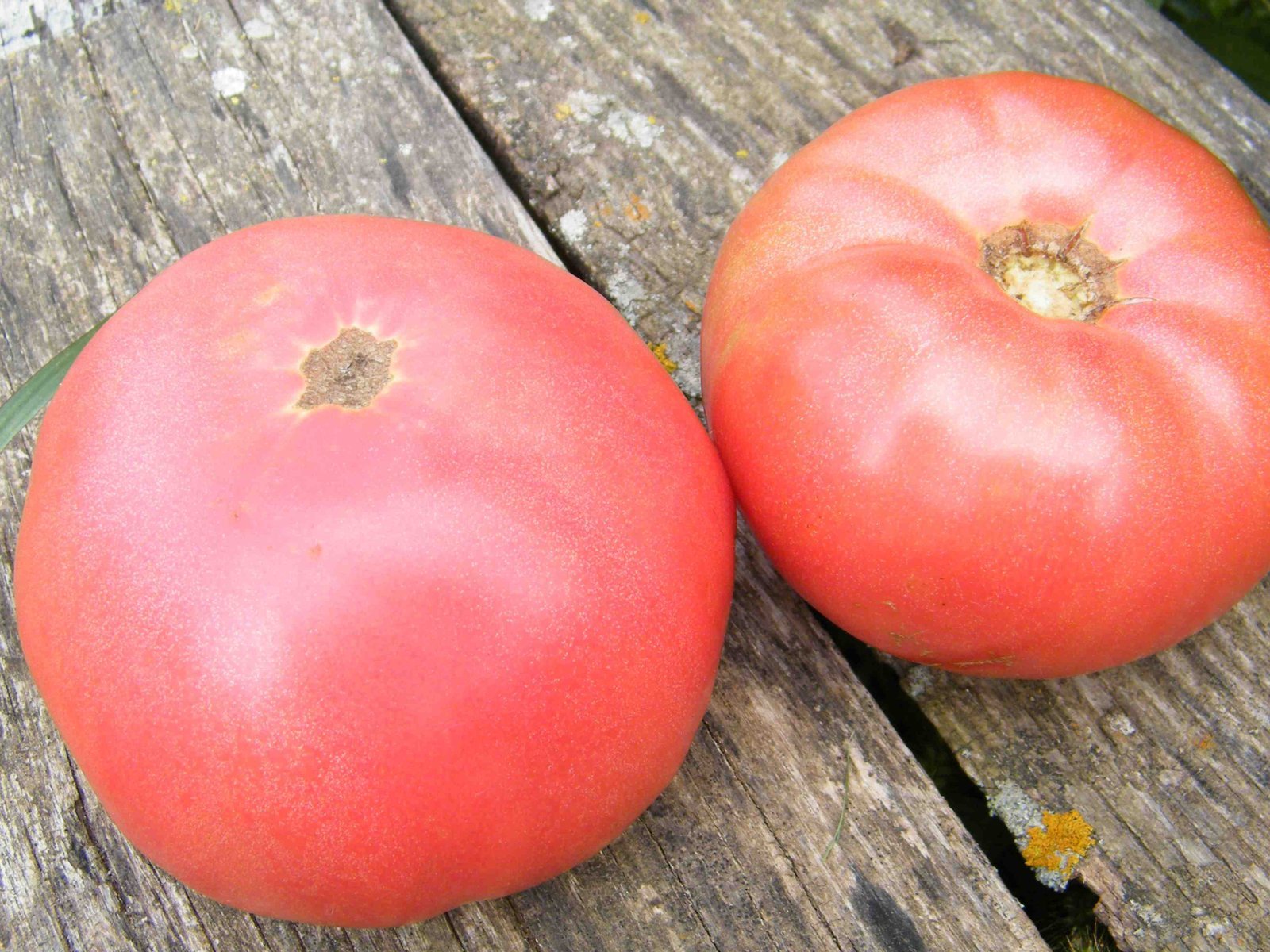 Fully Ripe Brandywine Heirloom
Fully Ripe Brandywine Heirloom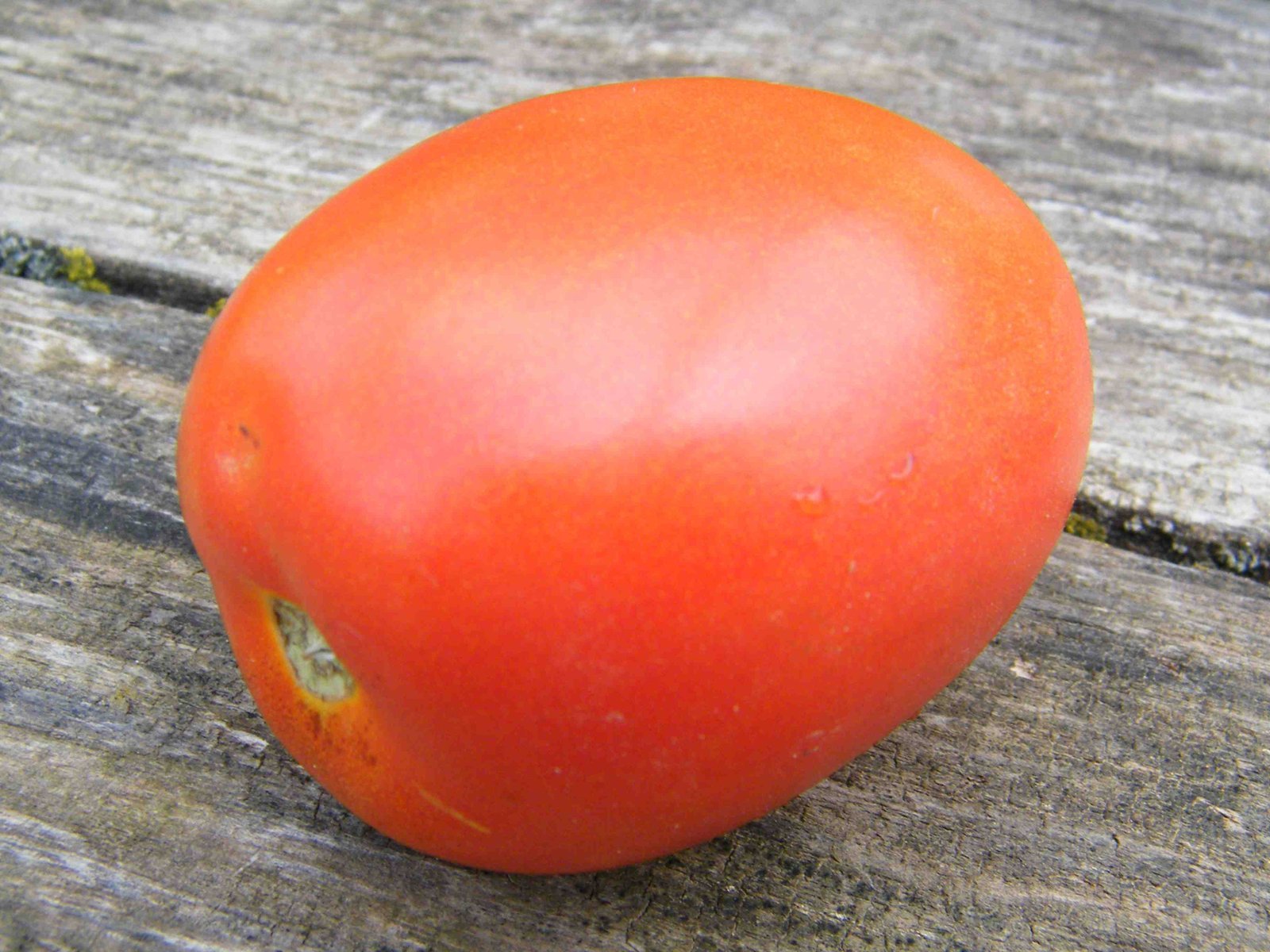 Classic Roma Paste Tomato
Classic Roma Paste Tomato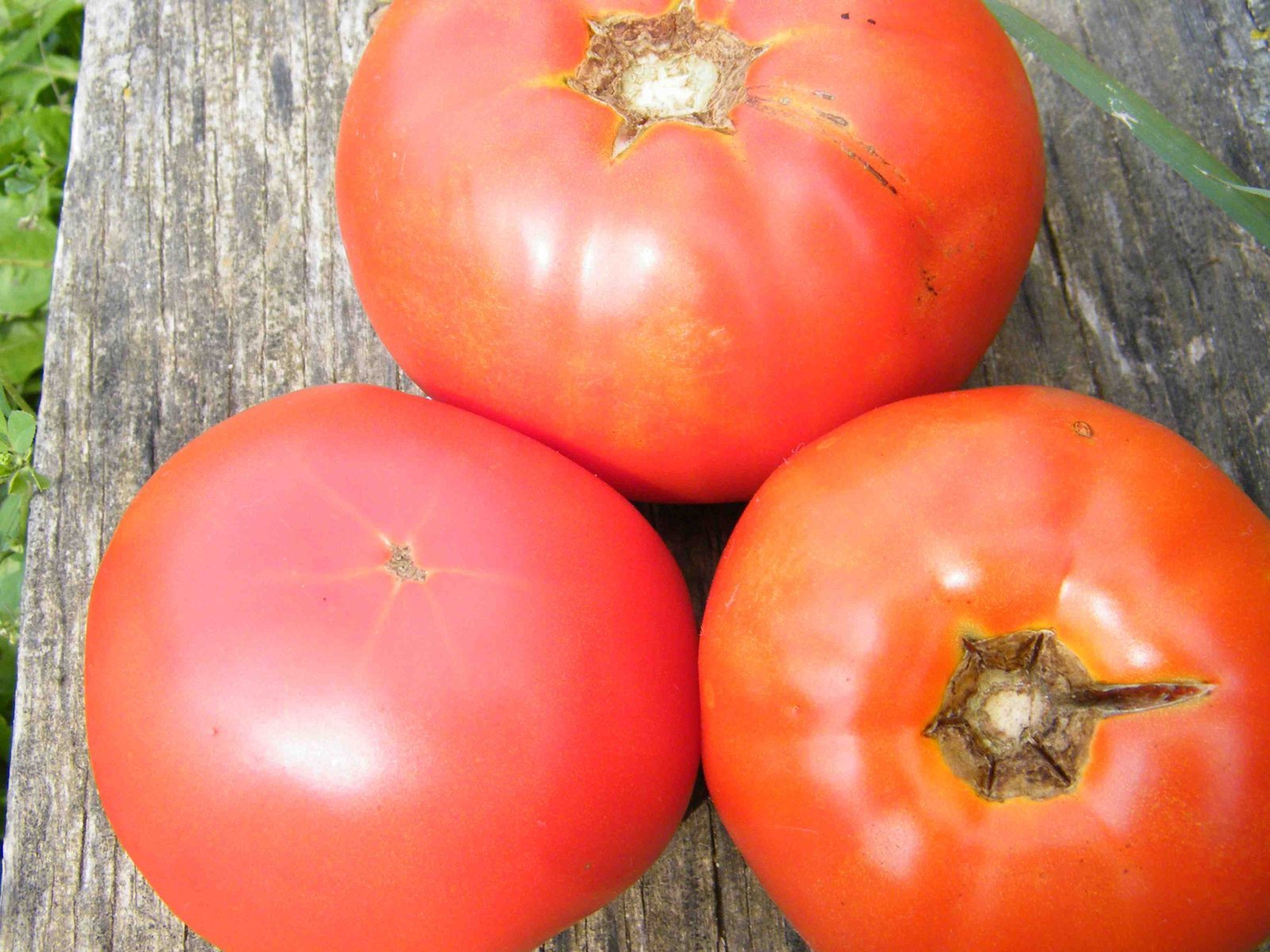 Red Heirloom
Red Heirloom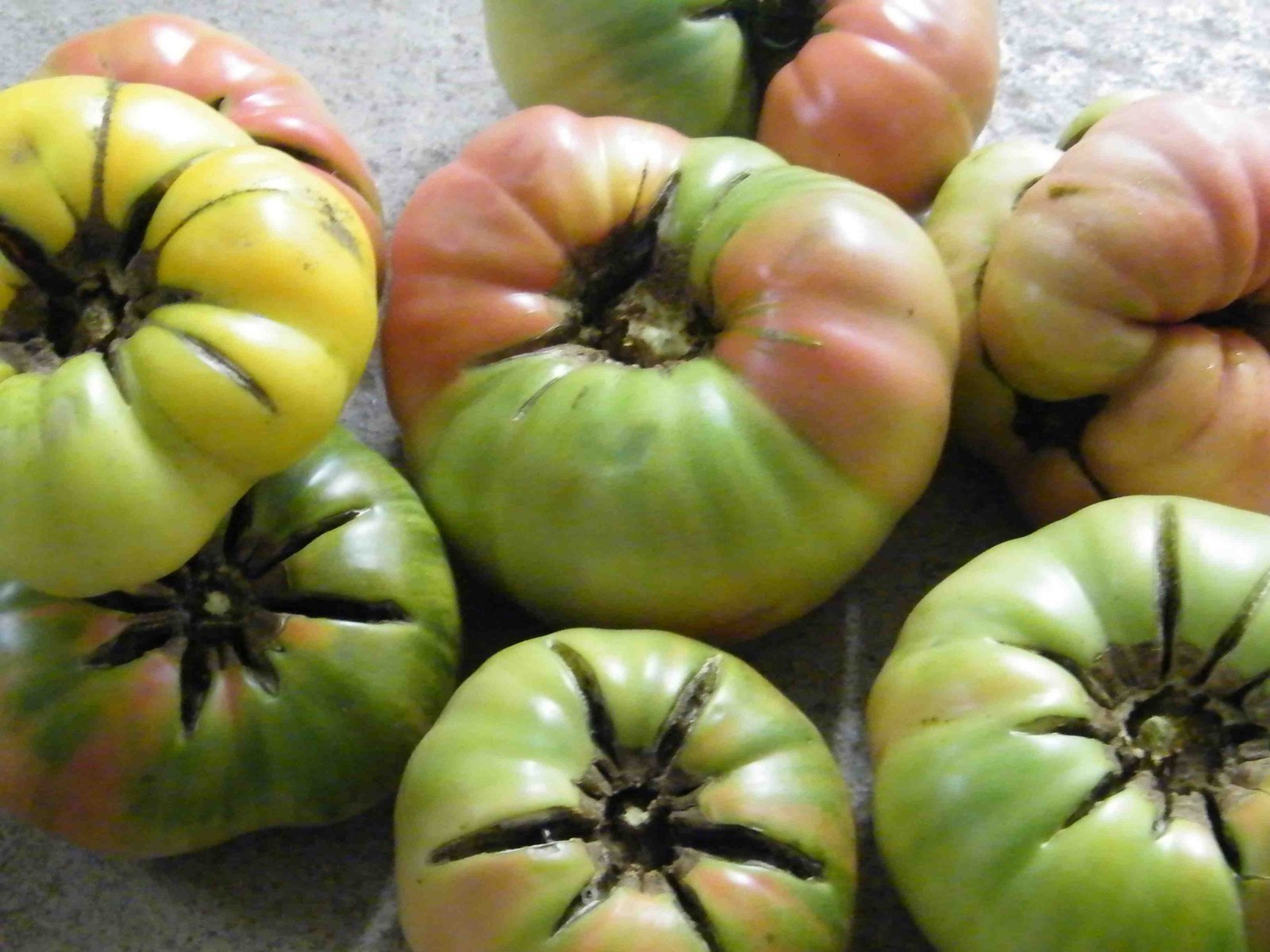 Funky Heirloom Behavior with Cracks and Bubbly Ridges
Funky Heirloom Behavior with Cracks and Bubbly Ridges
Red or Green Cabbage– How many creative ways can you use cabbage?
Red Watermelon or Cantelope- Allow your cantelope to sit at room temperature for an extra day or two to ripen a bit more.
Red Beets- The greens on the beets were looking a bit rough, so we just topped them for this week.
Cucumbers- The final giving of cucumbers. They look a little rough this week as well.
Zucchini, Yellow Squash, Patty Pans– WOW, can you believe the squash production?
White Onion- More where these puppies came from!
Garlic- Armenian Garlic. Keeps best in a cool, dark and dry place. It should be all cured down by now.
Hungarian Hot Wax Pepper or Jalapeno Pepper- The Hungarian Hot Wax are a very mild hot pepper or also called “bananna peppers”. We also picked some of the little green Jalapenos. Be prepared for a bit more heat if you got a Jalapeno!
Sweet Corn– We don’t pride ourselves on the sweet corn that we grow, but we do grow sweet corn! We were able to give everyone half a dozen this week. We may not have been able to fit more in the box anyways! It’s organic, so watch out for your occasional worm!
Colored Pepper- You may have received a purple, yellow, orange, red or bi-colored sweet pepper this week.
Green Beans– Definitely the end of the patch with these green beans. We’re just waiting for our yellow and purple beans to come on now!
Celery– This is the final celery giving. The top leaves were really starting to yellow. Celery is a heavy calcium feeder on your soils, and we suspect that our calcium levels may not be exactly where they need to be for celery. Every year we get a bit better at it.
Heirloom Tomato Mix- If your tomatoes are not fully ripe, allow them to sit at room temperature on a windowsil, countertop or ledge. They don’t actually love full direct sun for ripening. I would discourage you from placing them in the refrigerator because the fridge will hamper ripening and it can affect the flavor of the tomatoes. If you’re not sure what color your tomato is supposed to be, rely on the feel and the softness of the tomato to know when it’s ripen.
Flat Leaf Italian Parsley– A fun summer herb for all of your cooking. Pluck the leaves from the stems, dehydrate your parsley, and store in a glass jar with a tight lid for winter usage.
Tomato Onion and Cucumber Salad– From Therese, a Viroqua CSA member.